
AI
Companies that have solid business plans are 129% more likely to grow beyond the startup phase and develop into successful enterprises.
Moreover, a business plan is the driving force that makes those with business ideas 260% more likely to actually take steps toward launching their ventures (according to the same study).
Why’s that?
We can call it a power of knowing what you’re doing. A good business overview presentation dispels ambiguity and defines a clear path towards success.
A thorough introduction business plan is a well-oiled and highly organized machine behind the scenes that makes companies thrive and move forward regardless of the competition, changes in the economy, or other forces.
So, if you’re an aspiring individual looking to conquer the business world with your new idea and make investors believe in it, you need a business plan presentation.
This practical how-to guide will help you with that and provide you with top-notch business presentation examples to use as a ready-to-go template.
 |
 |
 |
A business idea presentation is a written, formal, and detailed document that outlines a company’s goals and objectives, strategies, financial projections, and operational plans for achieving success and sustainability.
Focusing more on the first goal, you should clearly understand that potential investors will first evaluate your business plan’s real chances of generating a return on their investment. So, your first task is to have a presentation plan that shows how you’re going to achieve profit. First things first, you’ll want to have a catchy brand name, and for that, you can use the AI business name generator.
Among other factors that can motivate investors to approve your project, some are critical.
Well, you guessed it. Regardless of which business plan presentation template you choose, your presentation should translate your ideas into convincing facts, plans, and actions for the investors to see. For a more dynamic pitch, you can incorporate corporate video templates to showcase your business vision
You can have a sea of business presentation ideas, but a typical audience’s attention span is 7 minutes. Well, 10 minutes at most if you have a super-engaging presentation or talk like Steve Jobs used to reveal Apple’s new products.
Based on the short time frame you have, Guy Kawasaki introduced a 10/20/30 rule – a must-follow answer to your “how to make a business plan presentation” question.
Eliminate the need to spend time creating a business plan presentation from scratch. With Renderforest’s online template library, you can choose any ready-to-go business plan slides template that’s designed with all the key features, creative elements, and professional approach.
Choose anything from creative, modern, and sleek presentations to minimal or flat designs. Customize in a few clicks to have a personalized, unique presentation.
 |
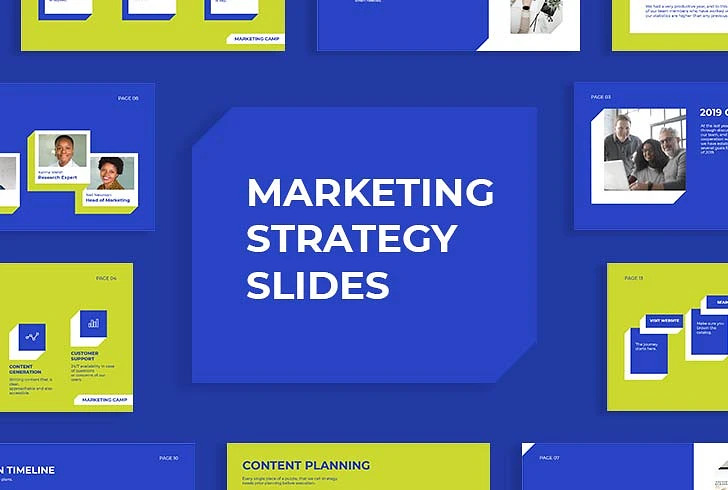 |
 |
Here are the key principles you should keep with your business plan presentation.
There are different company presentation examples based on the specific objective you chase with your business overview. You may (and ideally should) have one core business plan presentation, including all the key sections and details and a few different versions of it based on the key audiences and places you’re going to present it.
Let’s make it clear.
Say you have a meeting with investors on Monday, another one with your marketing team on Tuesday, and you’re also invited as a speaker to the business event on Saturday. Each of these events has different audiences you need to captivate. And even though the primary idea you want to get across doesn’t change, you need to adapt your visual business plan for each audience.
It may take you a few minutes to create a slightly modified version of your presentation, but the audience you’re addressing will appreciate it.
Try to appear with an adjusted presentation for each audience and place.
We should probably apologize for overusing the words “clear and concise,” but that’s what really working business slideshow examples are about.
So, we can’t stress this enough: be as brief as possible. Remember, an overloaded business plan presentation is your no-go area!
The template below is a brilliant business presentation example, considering all the above tips.

A cohesive, professional, and unified structure across all slides is essential. This means every slide in your business plan presentation should follow the same layout and design principles.
Colors, fonts, graphics, background, and buttons – all should follow the same rules. This will create a holistic, consistent experience for your audience while conveying your message clearly.
In some cases, certain slides can have different colors than others, but they should all have the same general look. When you look at your business plan presentation, there should be a feeling of congruence across all slides.
Otherwise, you risk leaving an unorganized, messy impression.
What are business plan slide template packs from Renderforest, and why are they the best solution for a consistent look?
Packs are a collection of different slides – intro, overview, summary, budget, team, mission & vision, etc. that are all designed to work together. No matter which ~10 sample business plan presentations you will choose from them, the final result will be a unified look.
See how our Startup Pitch Deck pack slides go together.
 |
 |
 |
Well, by now, you should’ve grasped the fundamentals of how to do company presentations. And when you know the theory, it’s time to move on to the practical part – the actual slides you should include in your business plan presentation.
The good news is you don’t need even a hint of design talent to have a striking business growth plan presentation. With Renderforest’s ready-to-use business plan presentation ideas, your manual work is limited to small editing with drag & drop options.
We’ve collected the key business plan presentation examples for you to grab and go.
Just scroll down to pick one!
Recommended Reading
Hello, it’s me!
The title slide is the very first impression your audience will get from your business plan presentation. That’s why it should be catchy, intriguing, and not too overloaded with information.
Keep in mind – the title slide of your business plan doesn’t have to include all the text; a few headlines or statements can be enough to captivate the audience.
The best business plan presentation tips say the title slide should include all or some of the following.
 |
 |
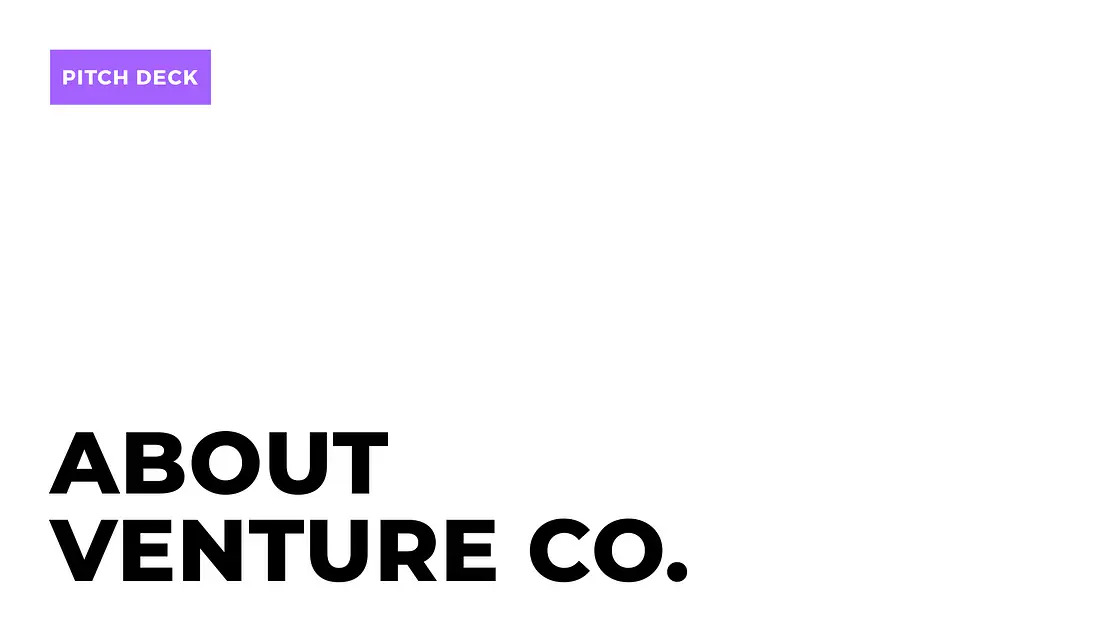 |
Consolidate all the high-level insights of your presentation here – this is the part to grab the audience’s attention and get them interested in the details.
The goal of an executive summary is to raise interest without revealing too much or giving away all your secrets.
You should be concise and clear here, focus on the top priorities that make you stand out from the competition, and share insights about what has been achieved and what business goals are ahead.
You can also share a few success stories from your industry or your own company, show how your current strategies have worked well in the past, and use them as an example to move forward.
Statistics, facts, numbers – these are all great attention grabbers.
 |
 |
 |
The most successful businesses effectively solve the existing problems which don’t have successful solutions yet. So it’s no surprise a problem & solution is your business plan pitch presentation’s fundamental block.
Describe the issue you’re solving, explain why it’s a major problem (backed up by relevant statistics), and show how your product or service can overcome the difficulty.
Include visuals – images, infographics, graphs, and diagrams to emphasize on the issue. You can also highlight customer reviews or success stories to further illustrate the issue.
Depending on how convincing you are at this stage, you can make or break the whole pitch.
 |
 |
 |
So, what’s all the buzz about you? It’s time to showcase the unique features of your business and what makes it stand out from the competition.
Value propositions are the distinguishing features of your product/service that should differentiate you from others in the market.
You can discuss such elements as quality, price, usability, support services, customization opportunities, and other factors of your provided solution that make you better than anyone else and what should drive people to choose you.
Value propositions can be presented in the form of competitive advantages, service catalogs, benefits, or a simple list of features.
The golden rule here is to avoid generic phrases and be as specific as possible.
 |
 |
 |
Investors will trust you if you prove you know the field you’re in. Knowing what you and your team are ready to do and knowing what the industry demands or how it works – are two different things.
So, however deep is your approach to presenting your company’s value propositions, be twice as deep and detailed when it comes to market analysis or industry overview part.
Explain the size of the market, its development over time, and the competitive landscape. Provide a full list of competitors, their strengths & weaknesses you should consider.
A good practice is to add trends & drivers in your industry – different components that shape the current state of affairs and will impact your future decision-making.
We highly recommend you proceed with your own research here, as publicly available stats (though very useful) don’t completely reveal your initiative and dedication to the project.
Even a small survey with your target audience or a focus group can be a great asset for your business ideas presentation.
 |
 |
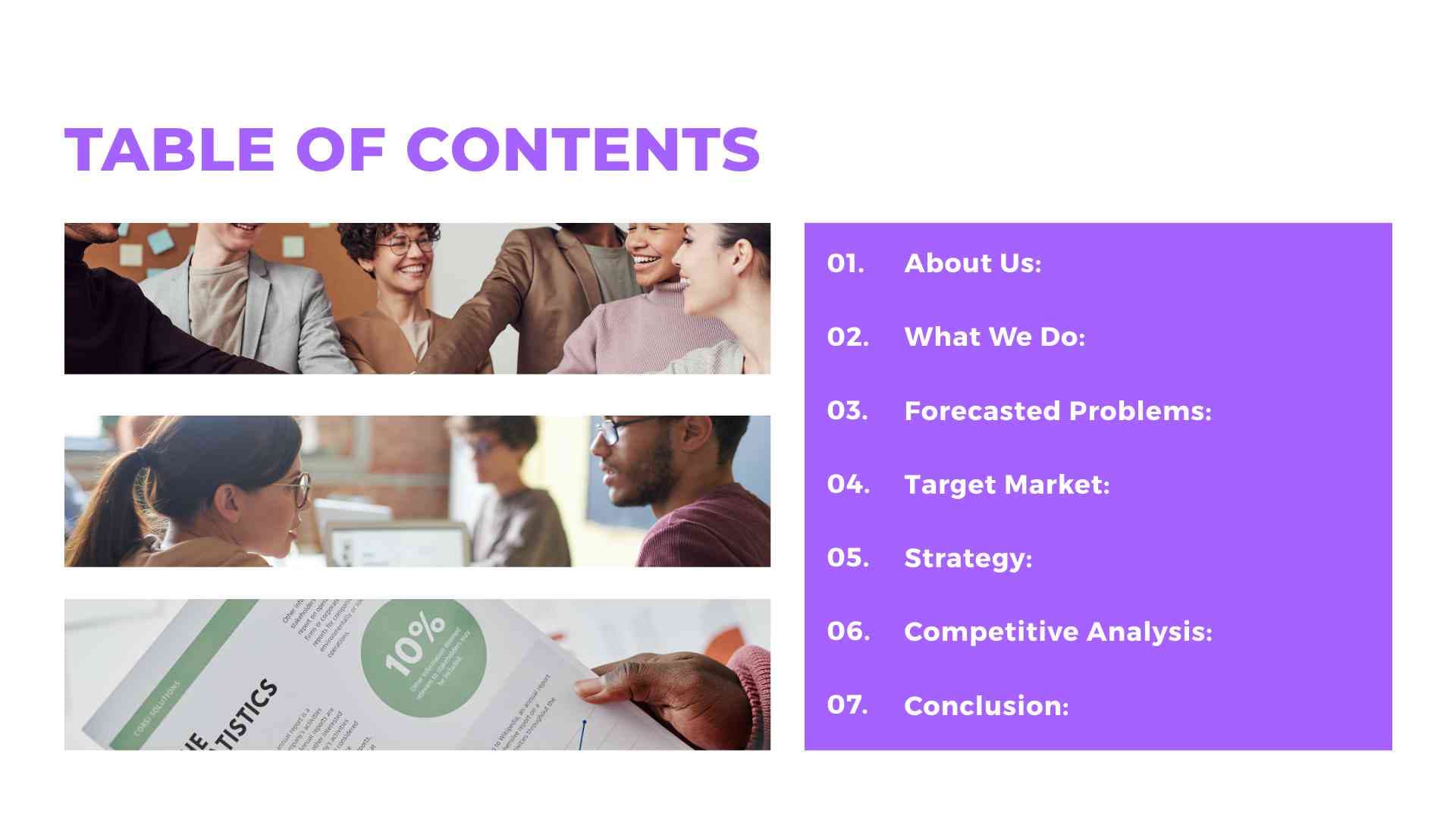 |
Reaching the paramount section – market strategy. When presenting a business plan to investors, that’s your chance to explain what business tactics you’ve chosen and why they are likely to work well.
For this part, you should outline the strategies, tactics, and approaches that will be used to acquire customers. Mention channels you’ll use for customer acquisition (SEO, PPC, social media campaigns, etc.) and their advantages and disadvantages in different markets.
Talk about pricing models – how will you charge users for different plans/packages, and how are they tailored to attract customers from different market segments?
Timeline format is one of the best practices when it comes to business plans for presentations. Picture your planned activities in chronological order, with estimated timelines to accomplish tasks. You can also include milestones in the timeline – significant events that will determine the success and development of your business.
 |
 |
 |
You also need a detailed accounting business plan presentation, where you show a thorough picture of how your company will be making money.
To make it work, you need to provide a realistic estimate about the amount of money that could be brought in from different areas: sales, investments, grants, etc., and then calculate expenses – salaries for key personnel, office rent & utilities, travel costs.
Try to think outside the box when it comes to financial projections. Include the cost of any external services required, such as virtual assistants, accounting personnel, or marketing campaigns that will be necessary.
Financial projections are the part where most startups fail because while many know how to scale their business, few can predict future expenses. If you don’t have a proper financial education to carry out this step, consider consulting an experienced financial analyst or accountant.
 |
 |
 |
Your business decisions have potential outcomes depending both on external and internal factors. Predicting those outcomes and including them in the business plan presentation for potential investors is called risk assessment or risk analysis – a crucial element without which your business plan presentation can’t be complete.
The risk assessment part should include an overview of the potential risks, your reserve plan to mitigate them, and the steps you will take for each risk.
Usually, businesses analyze external (economic, political, and technological) risks that are beyond their control and internal (operational, legal, financial) risks that can be managed and controlled.
It’s also common to calculate your business’s debt-to-equity ratio as a common financial risk evaluation tool. As debt is a potential risk for your company, and equity is your main resource to cover it, this ratio helps investors measure the financial stability of your business.
 |
 |
 |
Where do you stand in the competitive landscape? Here, you need to provide a full list of your competitors, their strengths & weaknesses.
Besides that, it’s important to explain how you’re different from them and what makes you unique – this is where your value propositions come into play. Show investors how your solution can solve a problem better than others through compelling evidence or experiences related to previous cases.
The two common ways to include competitor information in your business presentation outline are SWOT analysis and competitor analysis framework.
In the SWOT analysis, you should talk about the strengths, weaknesses, opportunities, and threats your company has and how it compares to your competitors.
The competitor analysis framework requires you to compare, evaluate, and rank each of the different business strategies they are using against yours. By doing this, you can identify potential areas and opportunities for improvement in the future.

When presenting a business plan, don’t forget to honor the people who help you build your business. Investors care about who is on the team and how capable they are of performing their tasks, so it’s important to introduce them in an appropriate way.
If you’re a small startup, list all key personnel – founders, CMOs, CFOs, etc., and talk briefly about their experience & achievements. Describe the combination of skill sets that makes your team unique and provide evidence to support it.
If you’re a larger organization, focus on introducing key executives. Show investors how each person is important to successfully make decisions, drive business growth, or innovate in their areas of expertise.
Also, mention if you have any experienced mentors, advisors, or board members who can help you move your business forward.
 |
 |
 |
If you ask how to present a business plan that leaves a lasting impression, your conclusion and call to action are the key. Basically, you need to explain what will put everything together and leave investors with an overwhelming sense of enthusiasm.
Summarize your main points and emphasize how all the previous parts create a powerful vision for potential success. Show them why it’s the right time to invest in your business and how they will get a return on their investment.
Finally, explain what you need from them – investments in cash or resources, board memberships, mentorship, etc., and give clear instructions on what investors should do next.
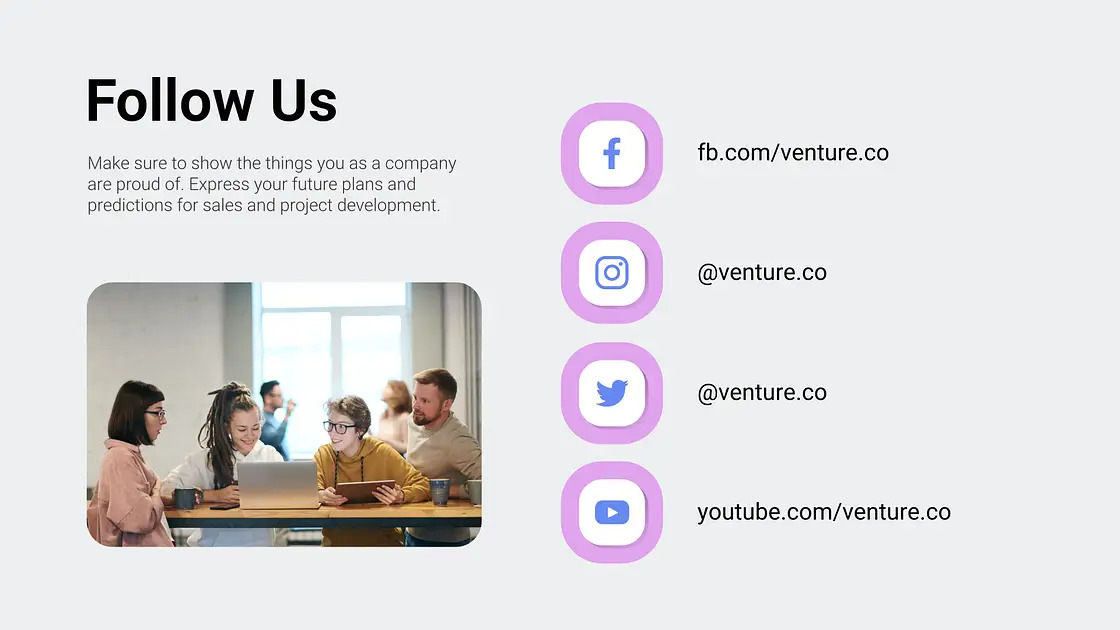 |
 |
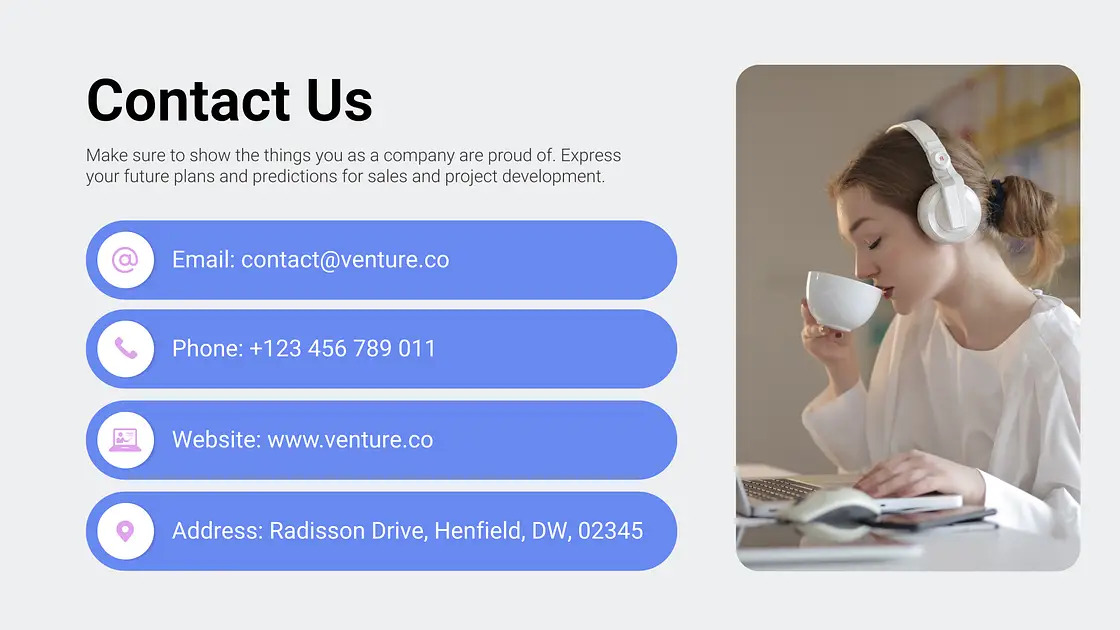 |
It’s time to create your new business presentation, and it’s easier than you may think with Renderforest.
Follow the below quick steps to create the actual presentation of a business plan to your potential investors to secure funding.
Head to our library of business plan presentations to find anything from financial and marketing to startup pitch decks, and choose the one that fits your business best.
Each business plan presentation pack has a different number of scenes. You can check out which ones have enough slides to include all the important information and pick the best one.
We recommend picking all your scenes from the same example business presentation pack, as each one differs in design and style, and keeping consistency can be tricky when mixing different packs.
Click on the pack you like the most, and choose “Create.” All the scenes available in the pack will be accessible to reorder, add, or remove as many business slide examples as you need.

Though every business plan slide in Renderforest comes in a neatly organized, professional design, you can still make it fit your corporate branding.
There are many editing options to make each slide look unique – change colors, font styles & sizes, and add your own images, icons, or GIFs. Make sure that design elements like backgrounds, shapes, or color schemes are all in line with your brand identity to show you mean business.

Done? Ready to present a business plan? Get the high-quality version of your business plan presentation in different formats, all adjusted to different devices you may use to present.
Renderforest business plan presentation is all yours – download it in JPG or PDF formats, or share a public link with your potential investors.
You can be confident about the output quality, as Renderforest has both 4k and HD resolution versions of your presentation slides.

Now, the question “how to start a business plan presentation” shouldn’t scare you with too many tasks to do.
The design part is handled by Renderforest with professionally chosen color and font combinations to fit the industry and purpose.
The tasks left to you are to input all the important information in slides and make sure all your branding elements are present and ready to download.
Article by: Renderforest Staff
Dive into our Forestblog of exclusive interviews, handy tutorials and interesting articles published every week!
Read all posts by Renderforest Staff

